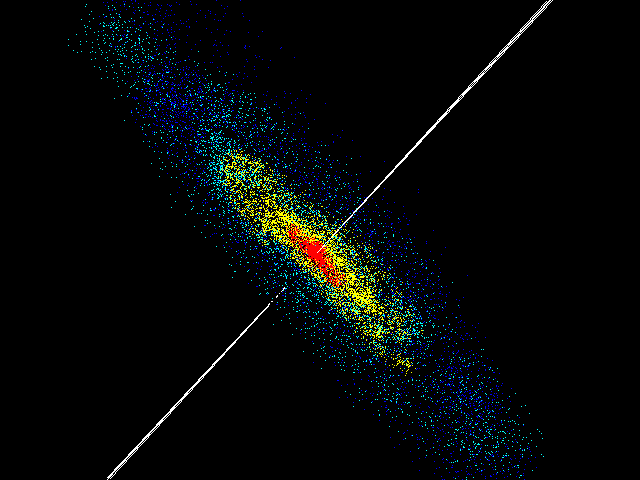Radio lobe galaxies
- Strong radio emitters.
- The radio signal doesn't come from the center of the galaxy but
from two ``lobes'' on the sides of the galaxy.
- The radio lobes do not emit visible light.
- The radio lobes are big, hundreds of kly.
- An example is Cygnus A.

- In this case, the central galaxy is rather small, and appears
to be two galaxies that have collided.
- Another example is Centaurus A = NGC 5128, shown in Fig 27-14 in your
book. Here the central galaxy is bigger and appears to be an elliptical
galaxy that is eating a spiral galaxy.

Three distant radio galaxies
with Hubble Space Telescope images superimposed on images of their radio
emissions (green contour lines). The galaxies are 3C265, 3C324, and 3C368.
(In the case of 3C265, the green line shows the axis of the radio lobes.)
What is going on?
The model of a supermassive black hole would appear to be a good guess.
The jets from the accretion disk shoot out beyond the galaxy and
eventually radiate at radio wavelengths.

Davison E. Soper, Institute of Theoretical Science,
University of Oregon, Eugene OR 97403 USA
soper@bovine.uoregon.edu




